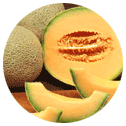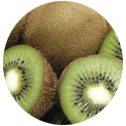 Full List of Fruits
Full List of Fruits  Pitombia fruit
Pitombia fruitPitombia fruit
![]() Introduction of Pitombia fruit
Introduction of Pitombia fruit
Scientific name - Talisia esculenta
Pitombia luschnathiana reigns from the family Myrtaceae, belongs to flowering plant category originates from states of Bahia, Brazil. Pitombia cultivated majorly for its consumable fruit. The skin is smooth and thin containing a golden-yellow colored pulp with a soft and juicy property added on to it. The aroma is rich, partially acidic in nature. The fruit utilized for preparing jellies, also used as a preservative and in carbonated drinks too. The fruit looks widely ovoid with a length of 1 inch and the top is covered by 4 or 5 sepals green in color with half inch length. The skins thinner part is of bright orange yellow color with a soft, melting, juicy pulp have a sweet to partially acidic taste. Fruits have a number of 1 to many seeds which are found on one half of the seed cover. The fruits have circular, ellipsoid shape with a diameter of 1.5-4 cm. The outer skin is found to be thin, tender and brown in color with a pulp of golden-yellow color, a look alike of apricot in their properties having a soft, melting, juicy, aromatic and mildly acidic, somewhat resinous in their taste. The flavor is best explained to be the mixture of apricot and lemon.
![]() Nutritional Value of Pitombia fruit
Nutritional Value of Pitombia fruit
Nutritional composition per 100 g pitomba fruit
| Carbohydrate | 8.8 g |
| Fat | 0.1 g |
| Protein | 0.4 g |
| Calcium | 15 mg |
| Phosphorous | 9 mg |
| Iron | 0.8 mg |
| Vitamin B1 | 0.04 mg |
| Vitamin B2 | 0.04 mg |
| Niacin | 0.5 mg |
| Vitamin C | 33 mg |
The wood is of light yellowish brown color which does not have much differences when compared to that of sapwood, it has a medium texture with interlocked grains, and the external appearance is firm and no special smell or taste. Their wood is hard in nature and very heavier too, becomes strong and resistant if dried for long, they are unaffected by the attacks of insects but easily tends to rot. It helps in construction work mainly in internals works like ceilings, floor boards, door frames, boxes, carpentry and many more.
![]() Health Benefits of Pitombia fruit
Health Benefits of Pitombia fruit
The consumption of Pitombia fruit is associated with a number of health benefits, including:
Improved digestion: The high fiber content of Pitombia fruit helps to protect the digestive system and promote regularity.
Reduced risk of cancer: The antioxidants present in Pitombia fruit may help reduce the risk of certain types of cancer.
Improved cardiovascular health: The fiber, magnesium, and potassium found in Pitombia fruit can help to reduce the risk of stroke, heart attack, and other cardiovascular diseases.
Reduced inflammation: The antioxidants in Pitombia fruit help to reduce inflammation, which can lead to a number of health problems.
Improved blood sugar levels: The low glycemic index of Pitombia fruit can help to regulate blood sugar levels.
Improved immune system: The high levels of vitamin C in Pitombia fruit can help to strengthen the immune system.
Improved vision: The vitamin A found in Pitombia fruit can help to improve vision and reduce the risk of age-related macular degeneration.
Improved skin health: The antioxidants in Pitombia fruit can help to protect the skin from free radicals, which can lead to wrinkles and other signs of aging.
In addition to its impressive nutrient profile, Pitombia fruit is also known for its sweet and sour taste, making it a great addition to a variety of recipes. It can be eaten fresh, dried, or cooked into a variety of dishes.
The Pitombia fruit tree is primarily cultivated for its edible fruit, which is oval-shaped and typically ranges from yellow to orange-red in color. The fruit has a sweet, tangy flavor, with a hint of acidity, and is commonly eaten fresh or used to make jams, jellies, and other preserves.
Pitombia trees need full sun to thrive, and will not tolerate shade. The trees should be planted in well-draining soil that is rich in organic matter. If the soil is too acidic, it should be amended with compost or manure prior to planting. It is important to water the tree regularly during its first growing season, as it will require a lot of water to establish a healthy root system.
Pitombia trees should be pruned regularly to promote healthy growth and to keep the tree in a manageable size. Pruning should be done in late winter or early spring, and should focus on removing dead or diseased branches, as well as any branches that are crossing or rubbing against each other. It is important to keep the center of the tree open to allow for adequate light and air circulation.
Fertilizing is important for Pitombia trees, as it will help them to produce more fruit and to remain healthy. Fertilizer should be applied in late winter or early spring, and should be a balanced fertilizer with a ratio of nitrogen, phosphorus, and potassium.
Pitombia trees typically produce fruit in the late summer or early fall, beginning when the tree is about four years old. The fruit is ready to harvest when it is soft and juicy. It is important to watch closely for signs of overripeness, as the fruit can quickly become overripe and spoil.
Once harvested, Pitombia fruit should be stored in a cool, dry place. The fruit can be eaten fresh, made into jams and jellies, or used to make liqueurs. It can also be frozen for up to six months without losing flavor.
In addition to being a delicious and versatile fruit, Pitombia trees also have ornamental value, as they produce fragrant white flowers in the spring or summer. This makes them a great addition to any landscape, as they provide both beauty and a tasty treat.
The propagation process takes place through the seeds directly, but only when its fresh, the germination process takes a period of 30 days. They withstand warm, humid climatic conditions so they are prone to be grown in the entire stretch of Amazon in places like Brazil, Colombia, Peru, Paraguay and also in Bolivia. A fully grown tree can yield a production of 100 pounds (45 kg) in a year. The yield is produced generally in the months from December to February in the regions of Amazon; on the other hand in Hawaii the production is from May to July.


















